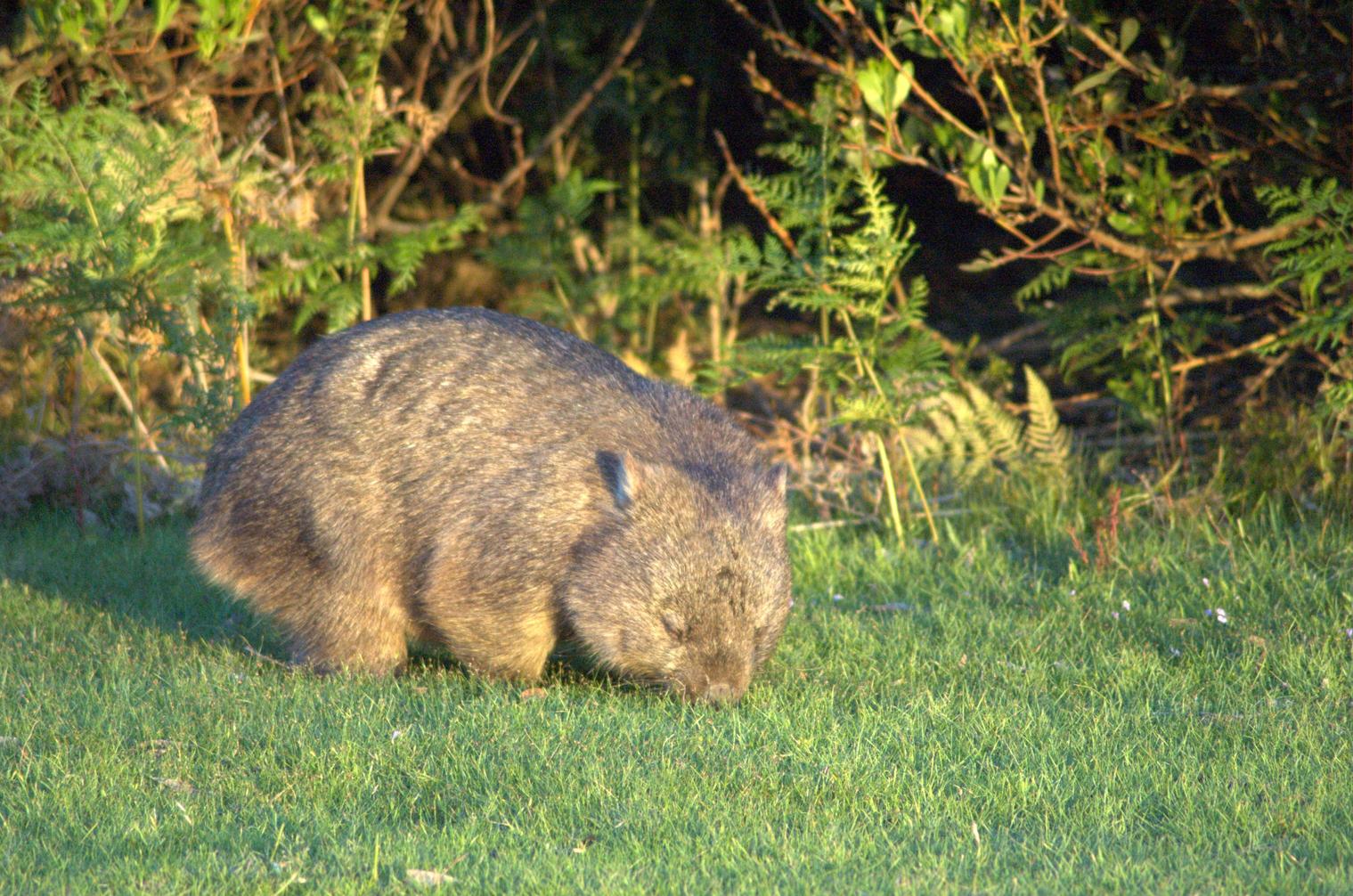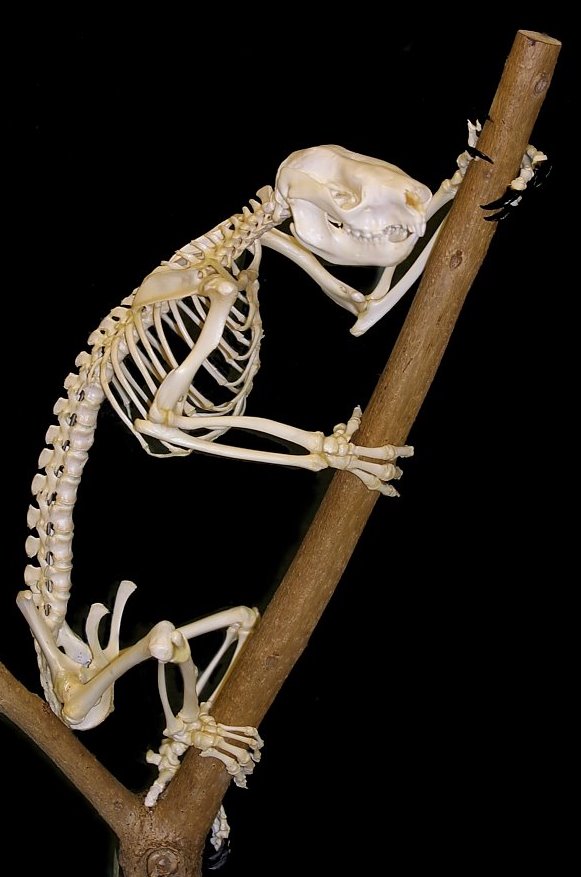|
Vombatiforms
The Vombatiformes are one of the three suborders of the large marsupial order Diprotodontia. Seven of the nine known Family (biology), families within this suborder are extinct; only the families Phascolarctidae, with the koala, and Vombatidae, with three extant species of wombat, survive. Among the extinct families are the Diprotodontidae, which includes the rhinoceros sized ''Diprotodon'', believed to be the largest marsupials ever, as well as the "marsupial lions" Thylacoleonidae and "marsupial tapirs" Palorchestidae. Classification After Suborder Vombatiformes * Family †Thylacoleonidae: (Thylacoleonidae, marsupial lions) ** Genus ''Microleo'' ** Genus ''Priscileo'' ** Genus ''Thylacoleo'' ** Genus ''Wakaleo'' *Infraorder Phascolarctomorphia ** Family Phascolarctidae: koala *** Genus ''Phascolarctos'' (one Extant taxon, living species) *** Genus †''Koobor'' *** Genus †''Litokoala'' *** Genus †''Madakoala'' *** Genus †''Nimiokoala'' *** Genus †''Perikoala'' * Infr ... [...More Info...] [...Related Items...] OR: [Wikipedia] [Google] [Baidu] |
Koala
The koala (''Phascolarctos cinereus''), sometimes inaccurately called the koala bear, is an arboreal herbivorous marsupial native to Australia. It is the only Extant taxon, extant representative of the Family (biology), family ''Phascolarctidae''. Its closest living relatives are the wombats. The koala is found in coastal areas of the island's eastern and southern regions, inhabiting Queensland, New South Wales, Victoria (state), Victoria, and South Australia. It is easily recognisable by its stout, tailless body and large head with round, fluffy ears and large, dark nose. The koala has a body length of and weighs . Its fur colour ranges from silver grey to chocolate brown. Koalas from the northern populations are typically smaller and lighter in colour than their counterparts further south. These populations are possibly separate subspecies, but not all researchers accept this. Koalas typically inhabit open ''Eucalyptus'' woodland, as the leaves of these trees make up mo ... [...More Info...] [...Related Items...] OR: [Wikipedia] [Google] [Baidu] |
Wombat
Wombats are short-legged, muscular quadrupedal marsupials of the family Vombatidae that are native to Australia. Living species are about in length with small, stubby tails and weigh between . They are adaptable and habitat tolerant, and are found in forested, mountainous, and heathland areas of southern and eastern Australia, including Tasmania, as well as an isolated patch of about in Epping Forest National Park in central Queensland. Etymology The name "wombat" comes from the now nearly extinct Dharug language spoken by the aboriginal Dharug people, who originally inhabited the Sydney area. It was first recorded in January 1798, when John Price and James Wilson, Europeans who had adopted aboriginal ways, visited the area of what is now Bargo, New South Wales. Price wrote: "We saw several sorts of dung of different animals, one of which Wilson called a 'Whom-batt', which is an animal about high, with short legs and a thick body with a large head, round ears, and very ... [...More Info...] [...Related Items...] OR: [Wikipedia] [Google] [Baidu] |
Phascolarctomorphia
The Phascolarctidae (''φάσκωλος (phaskolos)'' - pouch or bag, ''ἄρκτος (arktos)'' - bear, from the Greek ''phascolos'' + ''arctos'' meaning pouched bear) is a family of marsupials of the order Diprotodontia, consisting of only one extant species, the koala, and six well-known fossil species, with another six less well known fossil species, and two fossil species of the genus ''Koobor'', whose taxonomy is debatable but are placed in this group. The closest relatives of the Phascolarctidae are the wombats, which comprise the family Vombatidae. The fossil record of the family dates back to the Middle Miocene or Late Oligocene. Classification Family Phascolarctidae * Genus ''Nimiokoala'' **'' Nimiokoala greystanesi'' * Genus '' Invictokoala'' **''Invictokoala monticola'' * Genus ''Madakoala'' **''Madakoala robustus'' **''Madakoala wellsi'' **''Madakoala devisi'' * Genus ''Litokoala'' **''Litokoala garyjohnstoni'' **''Litokoala kutjamarpensis'' **''Litokoala kanunkaens ... [...More Info...] [...Related Items...] OR: [Wikipedia] [Google] [Baidu] |
Phascolarctos
''Phascolarctos'' is a genus of marsupials with one extant species, the koala '' Phascolarctos cinereus'', an iconic animal of Australia. Several extinct species of the genus are known from fossil material, these were also large tree dwellers that browsed on ''Eucalyptus'' leaves. Taxonomy The genus was named by French zoologist Henri Marie Ducrotay de Blainville in 1816. The type species, the modern koala, was named as '' Lipurus cinereus'' by G. A. Goldfuss in 1817, later combined as ''Phascolarctos cinereus''. Goldfuss published this name with a reproduction of John Lewin's 1803 illustration of the species in New South Wales. An accepted synonymy of other generic names referring to ''Phascolarctos'' was published in 1988. The koala is listed in national conservation legislation as "''Phascolarctos cinereus'' (combined populations of Qld, NSW and the ACT)", previously determined in 2012 to be "a species for the purposes of the EPBC act 1999" ( EPBC). The koala was classified ... [...More Info...] [...Related Items...] OR: [Wikipedia] [Google] [Baidu] |
Phascolarctos Cinereus
The koala (''Phascolarctos cinereus''), sometimes inaccurately called the koala bear, is an arboreal herbivorous marsupial native to Australia. It is the only extant representative of the family ''Phascolarctidae''. Its closest living relatives are the wombats. The koala is found in coastal areas of the island's eastern and southern regions, inhabiting Queensland, New South Wales, Victoria, and South Australia. It is easily recognisable by its stout, tailless body and large head with round, fluffy ears and large, dark nose. The koala has a body length of and weighs . Its fur colour ranges from silver grey to chocolate brown. Koalas from the northern populations are typically smaller and lighter in colour than their counterparts further south. These populations are possibly separate subspecies, but not all researchers accept this. Koalas typically inhabit open ''Eucalyptus'' woodland, as the leaves of these trees make up most of their diet. This eucalypt diet has low nutr ... [...More Info...] [...Related Items...] OR: [Wikipedia] [Google] [Baidu] |
Phascolarctidae
The Phascolarctidae (''φάσκωλος (phaskolos)'' - pouch or bag, ''ἄρκτος (arktos)'' - bear, from the Greek ''phascolos'' + ''arctos'' meaning pouched bear) is a family of marsupials of the order Diprotodontia, consisting of only one extant species, the koala, and six well-known fossil species, with another six less well known fossil species, and two fossil species of the genus ''Koobor'', whose taxonomy is debatable but are placed in this group. The closest relatives of the Phascolarctidae are the wombats, which comprise the family Vombatidae. The fossil record of the family dates back to the Middle Miocene or Late Oligocene. Classification Family Phascolarctidae * Genus '' Nimiokoala'' **'' Nimiokoala greystanesi'' * Genus '' Invictokoala'' **''Invictokoala monticola'' * Genus '' Madakoala'' **''Madakoala robustus'' **''Madakoala wellsi'' **''Madakoala devisi'' * Genus '' Litokoala'' **''Litokoala garyjohnstoni'' **''Litokoala kutjamarpensis'' **''Litokoala kanunk ... [...More Info...] [...Related Items...] OR: [Wikipedia] [Google] [Baidu] |
Madakoala
''Madakoala'' is a genus of extinct phascolarctid marsupials with three known species, ''Madakoala devisi,'' ''Madakoala wellsi'' ''and'' ''Madakoala robustus''. It is allied to extinct genera '' Invictokoala, Koobor, Litokoala, Nimiokoala, Perikoala, Phascolarctos'' and '' Priscakoala'', along with '' Phascolarctos'', the genus of the existing koala. ''Madakoala'' went extinct around 280,000 years ago in the Pleistocene The Pleistocene ( ; referred to colloquially as the ''ice age, Ice Age'') is the geological epoch (geology), epoch that lasted from to 11,700 years ago, spanning the Earth's most recent period of repeated glaciations. Before a change was fin ... epoch. They are known to exist by limited cranial material in fossils, so the existence of some of the subspecies is questionable because of missing dental data. References External links * Koalas Prehistoric vombatiforms Fossil taxa described in 1987 Prehistoric mammals of Australia Prehistoric ... [...More Info...] [...Related Items...] OR: [Wikipedia] [Google] [Baidu] |
Litokoala
''Litokoala'' is an extinct genus of marsupials, and along with '' Nimiokoala'', is closely related to the modern koala. The three genera may have diverged at an earlier date, although the drying of the continent and the expansion of ''Eucalyptus'' forests towards the late Miocene may have delayed the evolution of cranial features unique to the modern genera. This indicates that either fossil genus could be an ancestor of the modern genus, or the modern genus has a common ancestor to both. More material needs collection to improve their taxonomical relationships. The genus lived around 16–10 million years ago in the middle Miocene Riversleigh of Queensland. This area is described as a rainforest habitat at time of sediment deposition. It had a different diet to the modern species, with the dental symphysis unfused, indicating a diet that was properly varied in nature, unlike the specialised nature of ''Phascolarctos''. The size is estimated to be only half of the modern ge ... [...More Info...] [...Related Items...] OR: [Wikipedia] [Google] [Baidu] |
Koobor
''Koobor'' is an extinct genus of extinct phascolarctid marsupials Marsupials are a diverse group of mammals belonging to the infraclass Marsupialia. They are natively found in Australasia, Wallacea, and the Americas. One of marsupials' unique features is their reproductive strategy: the young are born in a .... The genus contains two species: ''Koobor jimbarratti'' and ''Koobor notabillis''.Archer, M.; Wade, M. 1976: Results of the Ray E. Lemley Expeditions, Part 1. The Allingham Formation and a new Pliocene vertebrate fauna from northern Queensland. ''Memoirs of the Queensland Museum'', 17(3): 379–398. bstract only seen/ref> References Koalas Prehistoric vombatiforms Fossil taxa described in 1976 Prehistoric mammals of Australia Prehistoric marsupial genera {{Diprotodont-stub ... [...More Info...] [...Related Items...] OR: [Wikipedia] [Google] [Baidu] |
Nimiokoala
''Nimiokoala greystanesi'' is an extinct marsupial, closely related to the extant koala, that inhabited northwestern Queensland in the early-middle Miocene (23–16 million years ago). It is the only species assigned to the genus ''Nimiokoala''. Along with species of sister genus '' Litokoala'', it is the smallest representative of family Phascolarctidae. Based on cladistic analysis, ''Nimiokoala'' is one of the more basal genera of Phascolarctide. It died out due to climate change rendering the environment more arid. It probably had a more generalized diet than that of the modern species, but its exact food preferences are unknown. Etymology The generic name, ''Nimiokoala,'' is derived from the Latin word ''Nimio'' "excessive" referring to its complex molar morphology relative to other koala species. The specific name, ''greystanesi,'' honors Greystanes High School. History of research As of 2013, the fossil record of extinct koalas consists of 163 specimens across 5 ... [...More Info...] [...Related Items...] OR: [Wikipedia] [Google] [Baidu] |
Perikoala
''Perikoala'' is an extinct genus of marsupials, related to the modern koala The koala (''Phascolarctos cinereus''), sometimes inaccurately called the koala bear, is an arboreal herbivorous marsupial native to Australia. It is the only Extant taxon, extant representative of the Family (biology), family ''Phascolar .... The genus diverged from a common ancestor of the other koala genera '' Nimiokoala'', '' Litokoala'', and '' Phascolarctos'', which contains the living koala. Two species are recognised: * '' Perikoala palankarinnica'' Stirton 1957 * '' Perikoala robustus'' Woodburne et al. 1987 References Prehistoric mammals of Australia Prehistoric vombatiforms Pleistocene marsupials Koalas Prehistoric marsupial genera {{paleo-marsupial-stub ... [...More Info...] [...Related Items...] OR: [Wikipedia] [Google] [Baidu] |
Wakaleo
''Wakaleo'' (Diyari ''waka'', "little", "small"; and Latin ''leo'', "lion") is an extinct genus of medium-sized thylacoleonids that lived in Australia in the Late Oligocene and Miocene Epochs. Taxonomy ''Wakaleo'' was erected in 1974 by W. A. Clemens and M. Plane. Five species are known: *''Wakaleo alcootaensis'' was found in the Miocene Waite Formation in the Northern Territory in 1974. It was slightly larger than the other two species. *''Wakaleo oldfieldi'' was found by a group of scientists working in the Miocene Wipijiri Formation in southern Australia in 1971. They found a nearly complete left dentary which included a few well-preserved teeth. *''Wakaleo pitikantensis'' described by Rauscher as the type species of the genus ''Priscileo'' in 1987B. Rauscher. 1987. Priscileo pitikantensis, a new genus and species of thylacoleonid marsupial (Marsupialia: Thylacoleonidae) from the Miocene Etaduma formation, South Australia. ''Possums and Opossums: Studies in Evolution'' ... [...More Info...] [...Related Items...] OR: [Wikipedia] [Google] [Baidu] |

